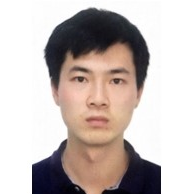Stereoscopic Remote Sensing of Air Pollutants: Emission, Formation, and Transport
A special issue of Remote Sensing (ISSN 2072-4292). This special issue belongs to the section "Atmospheric Remote Sensing".
Deadline for manuscript submissions: 31 August 2024 | Viewed by 105
Special Issue Editors
Interests: satellite remote sensing; air pollutants; atmospheric optics; emission inversion
Special Issues, Collections and Topics in MDPI journals
Interests: air quality; atmospheric chemistry; environmental health; emission inventory; radiative transfer; remote sensing
Special Issues, Collections and Topics in MDPI journals
Interests: ground-based stereoscopic remote sensing; hyperspectral instruments; atmospheric chemistry and physics; air pollutants; greenhouse gases
Special Issues, Collections and Topics in MDPI journals
Special Issue Information
Dear Colleagues,
In recent years, with the development of multi-platform remote sensing technologies such as satellite-based, airborne-based, ground-based, and ship-based sensing, the three-dimensional stereoscopic monitoring of air pollutants has been realized, providing a unique perspective for the analysis of the whole process of pollutant emission, transport, reaction, and deposition. Many of these emerging technologies are exciting and may inspire the scientific community, including geostationary satellites for trace gas observation, ground-based horizontal scanning, the development of a vertical multi-axis differential absorption spectrometer, trace gas monitoring lidar, and other optical methods. Combining these multiple observation techniques, multi-perspective three-dimensional observation can be performed at various scales, such as the meter-scale and kilometer-scale for regional or global coverage. With the help of chemical models or Lagrangian trajectory analysis, we are able to achieve source appointment and the characterization of air pollution, and provide further guidance for air quality policies.
Therefore, we are launching a new Special Issue, entitled "Stereoscopic remote sensing of air pollutants: emission, formation and transport", and welcome contributions addressing the following topics:
- The pinpoint and characterization of air pollution emissions.
- Process of air pollution.
- Source analysis of pollutants.
- Local and regional transport processes of pollutants.
- New techniques and algorithms for atmospheric remote sensing.
- New atmospheric physical and chemical models.
- Health risk of air pollutants.
Dr. Chengxin Zhang
Dr. Chi Li
Dr. Chengzhi Xing
Guest Editors
Manuscript Submission Information
Manuscripts should be submitted online at www.mdpi.com by registering and logging in to this website. Once you are registered, click here to go to the submission form. Manuscripts can be submitted until the deadline. All submissions that pass pre-check are peer-reviewed. Accepted papers will be published continuously in the journal (as soon as accepted) and will be listed together on the special issue website. Research articles, review articles as well as short communications are invited. For planned papers, a title and short abstract (about 100 words) can be sent to the Editorial Office for announcement on this website.
Submitted manuscripts should not have been published previously, nor be under consideration for publication elsewhere (except conference proceedings papers). All manuscripts are thoroughly refereed through a single-blind peer-review process. A guide for authors and other relevant information for submission of manuscripts is available on the Instructions for Authors page. Remote Sensing is an international peer-reviewed open access semimonthly journal published by MDPI.
Please visit the Instructions for Authors page before submitting a manuscript. The Article Processing Charge (APC) for publication in this open access journal is 2700 CHF (Swiss Francs). Submitted papers should be well formatted and use good English. Authors may use MDPI's English editing service prior to publication or during author revisions.
Keywords
- satellite remote sensing
- ground-based remote sensing
- atmospheric pollutants
- source analysis
- greenhouse gases
Planned Papers
The below list represents only planned manuscripts. Some of these manuscripts have not been received by the Editorial Office yet. Papers submitted to MDPI journals are subject to peer-review.
Title: Investigation of City-scale Ozone Formation Sensitivity using High-Resolution Precursor Observations in the Yangtze River Delta
Authors: Haoran Liu; Kunpeng Yang; Qianqian Hong; Wenjing Su; Mingwang Xu; Jiayi Peng; Qihou Hu; Cheng Liu
Affiliation: Information Materials and Intelligent Sensing Laboratory of Anhui Province, Institutes of Physical Science and Information Technology, Anhui University, Hefei 230601, China
Abstract: Information regarding the sensitivity regimes of ozone formation has considerable implications for the management of ozone pollution. In this study, we developed a methodology to identify the ozone formation sensitivity regime, which wasupgraded from the regional to the city scale by fitting unique thresholds for all 41 cities in the Yangtze River Delta (YRD) region in 2020. City-scale thresholds were validated against prior investigations within the YRD region, which yielded a high degree of concordance across findings. In spring, Zhejiang Province was predominantly in the NOx-limited regime, whereas Shanghai and parts of Jiangsu Province exhibited volatile organic compound (VOC)-limited characteristics. Autumn and winter showed different VOC-limited regimes in the YRD region. In autumn, the VOC-limited regime expanded, whereas in winter, most areas of the region fell under the VOC-limited regime because of increased energy consumption and lower temperatures. The ozone formation process in the high ozone area of the YRD was mainly influenced by VOC emissions. When comparing urban and rural areas in the YRD region, it is evident that urban areas fall primarily under the VOC-limited regime, whereas rural areas tend to be influenced more by the NOx-limited regime. We also attempted to fit the thresholds at the sub-city scale using data from 10 stations in Hefei City. We found that different monitoring stations within the same city produced varying fitted thresholds, indicating differences in ozone formation sensitivity regimes within urban areas. This study highlights the necessity for targeted emission control measures at finer spatial scales.







